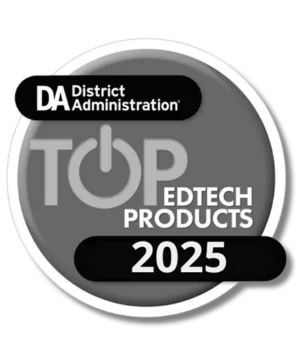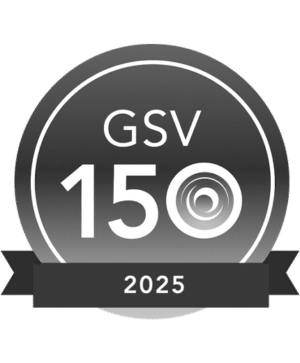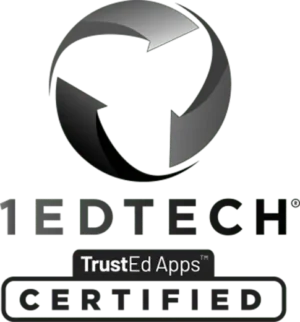

You’ve heard the buzzword “Gamify” before but have absolutely no idea what it means or how to implement it, or even if you should implement it. Well, lets start with explaining what it is. Gamification is the idea that training/teaching/human action in general is more effective, has better retention, and is even more enjoyable when completed in the context of a game. Why? Because as a population, humans like to play games; we are competitive, we like to have fun, we like rewards, we like being recognized that we have accomplished something. Gamification takes these fundamental natures and turns them into a constructive way to deliver and retain information. (Click here for scholarly research that supports these assertions and provides some caveats to keep in mind.)
Essentially, the idea is to reward individuals or small groups with recognition/prizes/positive reinforcement when they complete desired actions. So, what are some easy ways to accomplish this?
1) One-Time Gamification: Turning Assessments into Games
If any of you have attended a training session with me, you have most likely experienced a very simple and immediate way to gamify professional development by turning assessments into contests. I do this using the free online quiz making app called Kahoot! because it is simple to make, fun to use, and easy to understand. It allows me to review concepts that I covered in a lightly competitive, fun and entertaining way while still assessing understanding. Each quiz/contest is self-contained, and doesn’t require any software or gaming infrastructure to implement. Kahoot! isn’t the only online quiz/contest tool out there, though. Another one is Quizizz, which can be used to assess understanding over a multi-week timeframe instead of being just limited to one session. Quizizz also is a different format that shows a progress bar as users go through the test instead of a leaderboard which Kahoot! displays after each question. I haven’t used this one personally, but some educators I’ve spoken with have told me that they really like this app. There are others as well like Quizalize, Pear Deck, Formative, and Socrative which are more student based. Links to the 2 featured online quizzes are below:
https://getkahoot.com/
http://quizizz.com/
2) Multi Session Gamification: Boards, Points, and Badges
While gamifying a single experience can have significant impact on that one session of Professional Development, after that session there isn’t much follow-up and there is little to no continuity. Enter the next level of gamification, which is to give recognition over the course of time. While there are many ways to do this, there are three common features: Some type of public progress board/leaderboard, a way to earn and record points, a way to earn and display badges. Lets explore each:
– The leaderboard provides a public way to see how every participant is doing (in this way the competition aspect can heat up). This is how each of your participants can see what the other is doing and where they are in comparison to others. It can monitor accomplishments, CEUs completed, students who have happy faces, it doesn’t matter. The point is to have a public and transparent way to see how the “game” is progressing. This board can be anything from a spare whiteboard that you have in the teachers’ lounge or a complex digital board that automatically sends out notifications when things change.
– The points are a way to track progress after people accomplish tasks. Just like points in a game, they tell the other players who is “winning” the game. Participants can earn points for any number of activities (accomplishments, training session completed, etc.) and they don’t have to be boring hashmarks or numbers. The points can be smiley faces or pencil stickers. Points are simply a mechanism to track progress in a public venue.
– The badges are for when participants complete certain milestones. These milestones can be tied to the number of points someone gets (5 points in a week, most points overall, most points in the last month, etc.) and demonstrate to others their own accomplishments. But they don’t have to be limited to points! Why not have badges for having the class with the best attendance? What about for the class with the most well behaved kids? Or a badge for a teacher with perfect attendance for 9 weeks? Or even a badge for the silliest hat on crazy hat day? Having various ways to get badges OTHER than by points encourages those who aren’t as competitive to participate in the game. Most importantly, badges need to be visible. The point of a badge is to gain recognition that “I did a good job!” As such, a badge could be a digital badge, it could be a badge that is put on a classroom door, or not even a badge at all. The “badge” can even be a trophy or stuffed animal that gets passed around. Badges must be public, though, because it is a visual reminder to others of accomplishment. It encourages recognition of a job well done.
Of course, tying prizes or something with intrinsic value like a gift card to badges and points will encourage people to get them (the teacher who earned the Perfect Attendance Monkey gets to wear jeans for the next month), but don’t underestimate simply earning and displaying a badge. Getting recognition from colleagues is just as effective as a prize.
Using this method of gamification requires a little more work but can have better results over the long term. Don’t try to start off with everything all at once. The great thing about this is that you can implement small pieces at first and just add other actions on an ad hoc basis as you think of them.
3) Implemented Gamification: Fully gamifying aspects of your Professional Development and Workplace
In all honesty, there really isn’t an “easy” way to do this if you do it yourself. Fully Gamifying your workplace takes the 2 concepts mentioned above and implements them within an entire infrastructure of gaming elements. This is extraordinarily effective and has been demonstrated successfully in many Fortune 500 companies. Why? Because all Professional Development becomes a game and you get to monitor that game.
Think about that. Individual Sessions, CEUs, Online Modules, Conferences, even classroom metrics are all used within the context of gamifying and they deliver metrics. With this level of gamification, not only are the previous concepts implemented, but as the director of this enterprise you are able to monitor the metrics in order to use the data for actionable results. That is one of the greatest benfits of gamifying (I mean, all games have metrics right? Remember the movie “Moneyball”? Same concept), you can actually see what is and what isn’t effective and then make changes accordingly. The problem? It’s going to take a little bit of investment to implement this and a whole heck of a lot of time. Don’t have time? You’re in luck! There are some companies out there that will help you gamify your district for a fee. They’ll take you through a consultation and try to find what works best for you, some examples (but not all) would be: Badgeville, Breakaway Games, Bunchball, and GamEffective*.
I’m a big fan of gamification. It provides a fun way to keep Professional Development interesting and encourages people to continue to participate even if they normally wouldn’t be as excited to do so (people might even be excited to go to a particularly tedious training session if it is presented as a “boss” in the game). If nothing else, I encourage you to start immediately with one of the free websites mentioned in point one. It could make your staff meetings a little more entertaining, if nothing else.
*Neither SchoolStatus nor Richard Walter endorses any of the companies mentioned here. These are provided as a sample of what is available in the market.
Thanks for reading! Here are more resources to support students and educators
Stay Connected
News, articles, and tips for meeting your district’s goals—delivered to your inbox.

















